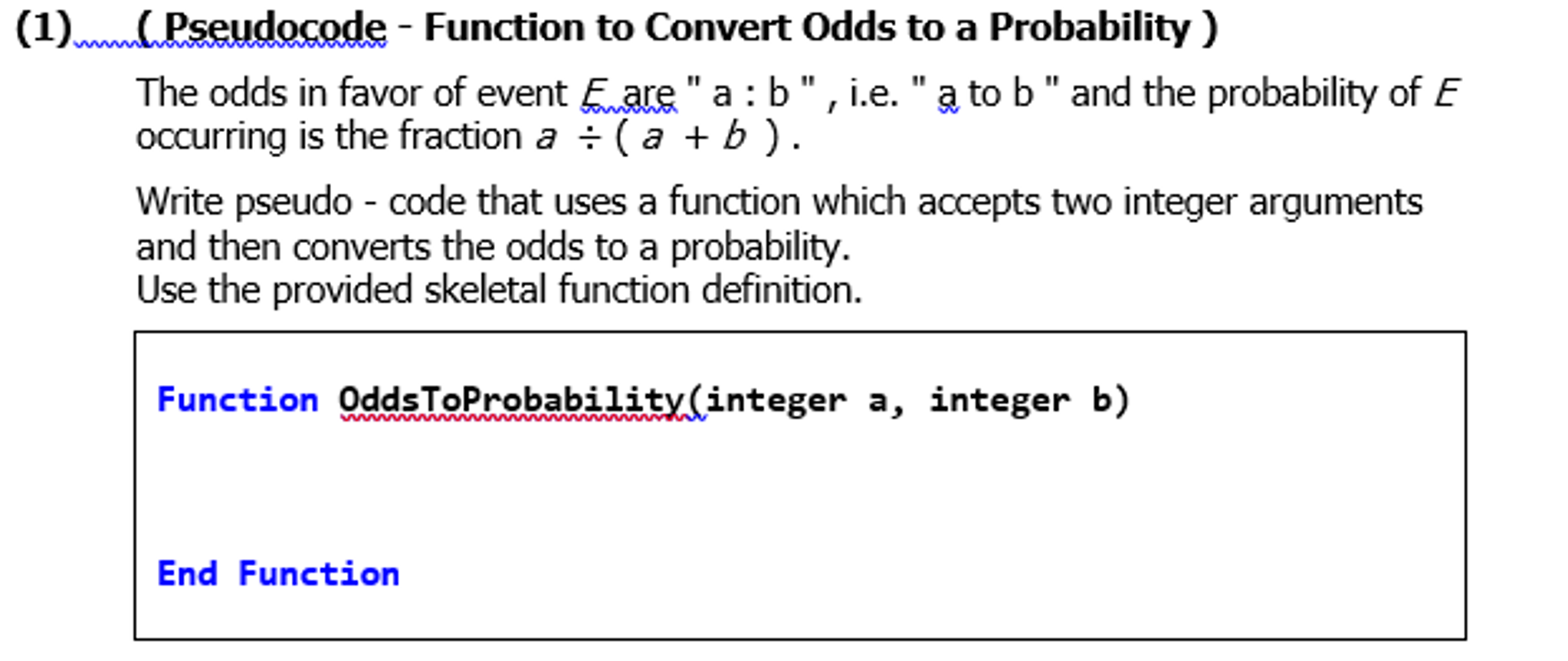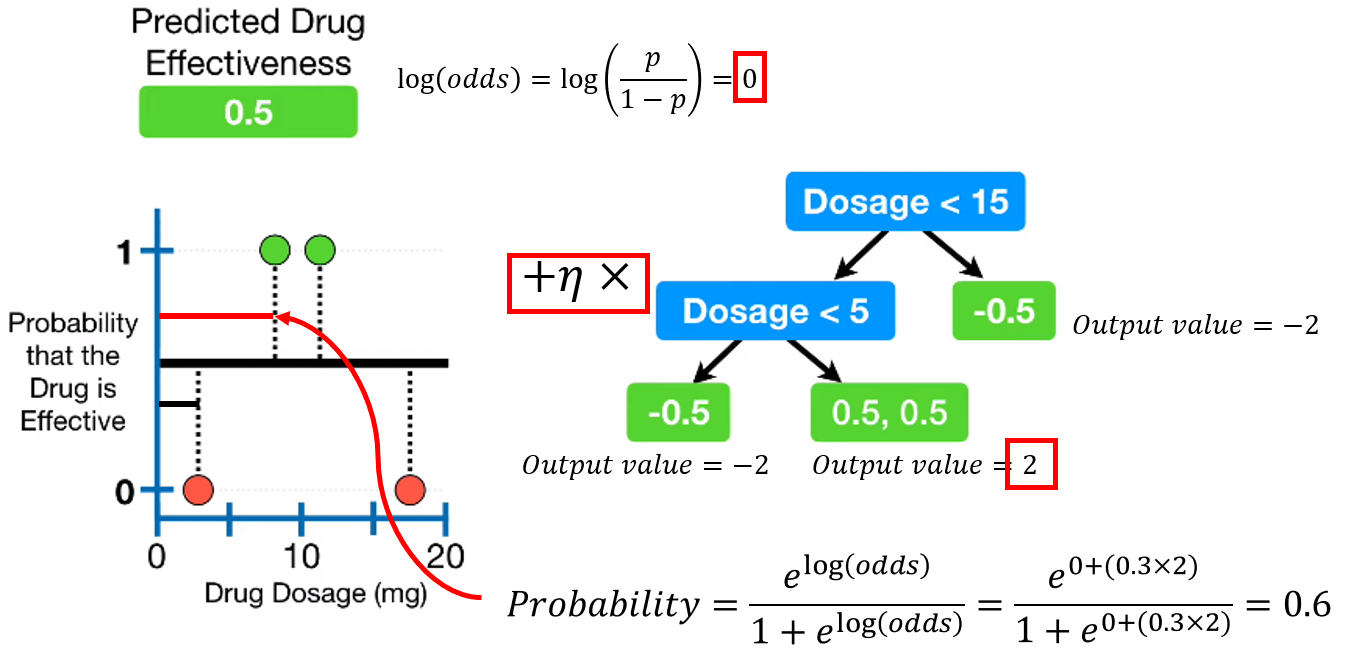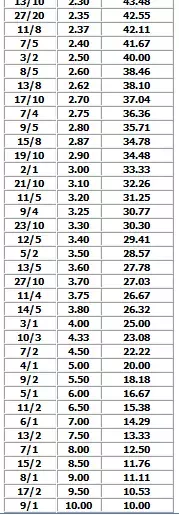Convert Probability To Odds
Knowing how to convert units and bets can be very useful. If you do not know how to convert odds for their respective probabilities, you will not actually help your chances of getting away as a long term winner in the competitive world of sports betting. Understanding the likelihood of the odds being offered is the key to assessing the potential value of a particular game market. And that is just as important when considering the value that exists with regard to specific odds on a given result. If the probability is less than your own probability of a particular result, it represents a value for betting. But if you want to learn how to convert odds to probability and how to hide the probability of different odds formats, read on.
Labs(title ='probability versus odds') 0.00 0.25 0.50 0.75 1.00 0 50 100 150 odds p probability versus odds Finally, this is the plot that I think you’llfind most. The odds converter tool in this page will convert odds from any of the three main formats into the other formats. It will also calculate the relevant implied probability too. To use it, simply enter the odds you wish to convert in the appropriate box, and then click the “Convert Odds” button. Enter the odds you wish to convert into any of the boxes in the betting odds converter and click on “Convert”. It will then display the equivalent odds in all the different formats. For example, the exact mathematical equivalent of decimal odds 30 is fractional odds 29/1. However 29/1 is not used in betting markets, instead 30/1 is used, so that is what appears in this converter. For an explanation of the odds types on this table see decimal, fractional and American odds.
This article explains in detail how to convert the three most popular formats odds in the world – decimal, traditional and American – to their probabilities and how to convert a probability to any of these odds formats. Our Odds Conversion Calculator will also convert a odds probability. Want to know which 70% probability is represented as in “Decimal Odds”? Forest odds conversion tools will show you. Just enter the probability as one percent and our odds conversion tool will do the rest.
In order to convert decimal odds to the implied probability, a simple formula of 1 divided by the odds and then multiplied by 100 gives the expected outcome.
How to convert odds – step by step
There are three basic steps to converting odds.1. Understand the odds format by answering the question: Are the odds you want to convert Decimal, Traditional or American? 2. Convert the odds to their probability.3. Convert the probability of your preferred odds format.
For example, “Decimal Odds” of 3.00 is a 33.3% probability, which can then be converted into traditional odds of 2/1.
This article discusses this process of unequal conversion in detail using step-by-step real-life examples. If you are new to betting odds and probabilities, the table below gives a good introduction and overview.
Convert “decimal odds”
“Decimal Odds” is a simple reflection of the return you get for each unit. Let’s say, for example. Say the bet company Bethard offers 1.65 odds for Manchester United to win. This means that for every 1.00 you bet on that specific result, you get a 0.65 win if Manchester United wins.

To convert these odds to their respective probabilities, we make a simple calculation.
Convert “Decimal Odds” to probability formula:
| Probability | = | 1 / “Decimal Odds” |
Let’s look at an example where Diego Costa gets a yellow card where the odds are 1.65.
Example: How to convert “Decimal Odds” to the probability
| 1 / 1.65 | = | 0606 |

Then multiply by 100 to express a probability percentage of 60.6%.
Convert traditional odds
Traditional / British odds are generally the most traditional form of betting. They are a simple reflection of the return you receive for a certain amount.
So for example, let’s say that the gaming company Ladbrokes offers 5/2 odds for a particular horse to win a race. Odds 5/2 (expressed as “5 to 2”), which means that for every 2 units you bet, you get 5 back as a win. So if you bet 200kr. On that horse, you would have received 500kr. win plus your original bet of $ 200. back.
Convert traditional odds to probability formula:
| Probability | = | the denominator / (denominator + counters) |
Let’s look at an example where Diego Costa gets a yellow card where odds are 5/2.
Example: How to convert traditional odds to probability
| 5/2 | = | 2 / (2 + 5) | = | 2/7 | = | .2857 |
Then multiply by 100 to express a probability rate of 28.57%
Convert Moneyline Odds
Moneyline odds, also known as “US odds”, are probably the oddest odds format for us outside of North America. And at first, they seem a little confusing. Understand what these odds mean when listening to Americans talking about sports betting or podcasts. Let’s see how we can convert Moneyline odds to their respective probabilities.
There are two cases of Moneyline odds: “minus” money and “plus” money.
The first is “minus” money. This is expressed as, for example, -120. But what does that really mean? Say the game company offers odds of -120 for the Los Angeles Lakers to win a fight. This essentially says that in order to win 100 crowns, you must bet 120 kroner. In other words, if you add $ 120, you get a $ 100 profit.
The second occurrence is “plus” money. This is expressed as, for example, +180. In this case, we say that the gaming company Winner Sports offered 1-0 odds for the New York Yankees to win a game. This simply means that if you bet £ 100, you will win £ 180.
So how do we convert “minus” and “plus” moneyline odds to their probability? Let’s start with the “minus” moneyline conversion:
Convert “minus” money line odds to probability:

| Probability | = | (- (minus money line odds)) / (- (minus money line odds)) + 100 |
So let’s take an example where Titanbet offers the following odds: San Diego Chargers wins against New England Patriots with odds -120.
Example: How to convert ‘minus’ moneyline odds
| (- (-120) / ((- (-120)) + 100) | = | 120/220 | = | 0545 |
Multiplied by 100, we get the probability of 54.5%.
How To Convert Probability To Odds Formula
Converting a “plus” money line is a little different. Calculate the probability of these looking like this:
Convert “plus” money line odds to probability chance:
Converting Probability To Odds
| Probability | = | 100 / (‘plus’ moneyline odds + 100) |
So let’s take an example where Mr. Green offers odds +180 for the Los Angeles Lakers to win against the Miami Heat.
Example: How to convert ‘plus’ moneyline odds
| (100/180 + 100) | = | 100/280 | = | 0357 |
Then multiply by 100, we get the implied probability percentage 35.7%.
So, this was our guide on how to convert units and odds easily. If you like this article and want to stay updated with TrendMut then fill the form and click the subscribe button below.
Chance can be expressed either as a probability or as odds. In most contexts, there is no particular reason to prefer one over the other. Most scientists tend to feel more comfortable thinking about probabilities than odds, but that is a matter of training and custom, not logic.
The distinction is simple:
- The probability that an event will occur is the fraction of times you expect to see that event in many trials. Probabilities always range between 0 and 1.
- The odds are defined as the probability that the event will occur divided by the probability that the event will not occur.
A probability of 0 is the same as odds of 0. Probabilities between 0 and 0.5 equal odds less than 1.0. A probability of 0.5 is the same as odds of 1.0. Think of it this way: The probability of flipping a coin to heads is 50%. The odds are “fifty: fifty,” which equals 1.0.
As the probability goes up from 0.5 to 1.0, the odds increase from 1.0 to approach infinity. For example, if the probability is 0.75, then the odds are 75:25, three to one, or 3.0.
If the odds are high (million to one), the probability is almost 1.00. If the odds are tiny (one to a million), the probablility is tiny, almost zero.
Converting between odds and probability is straightforward:
- To convert from a probability to odds, divide the probability by one minus that probability. So if the probability is 10% or 0.10 , then the odds are 0.1/0.9 or ‘1 to 9’ or 0.111.
- To convert from odds to a probability, divide the odds by one plus the odds. So to convert odds of 1/9 to a probability, divide 1/9 by 10/9 to obtain the probability of 0.10.